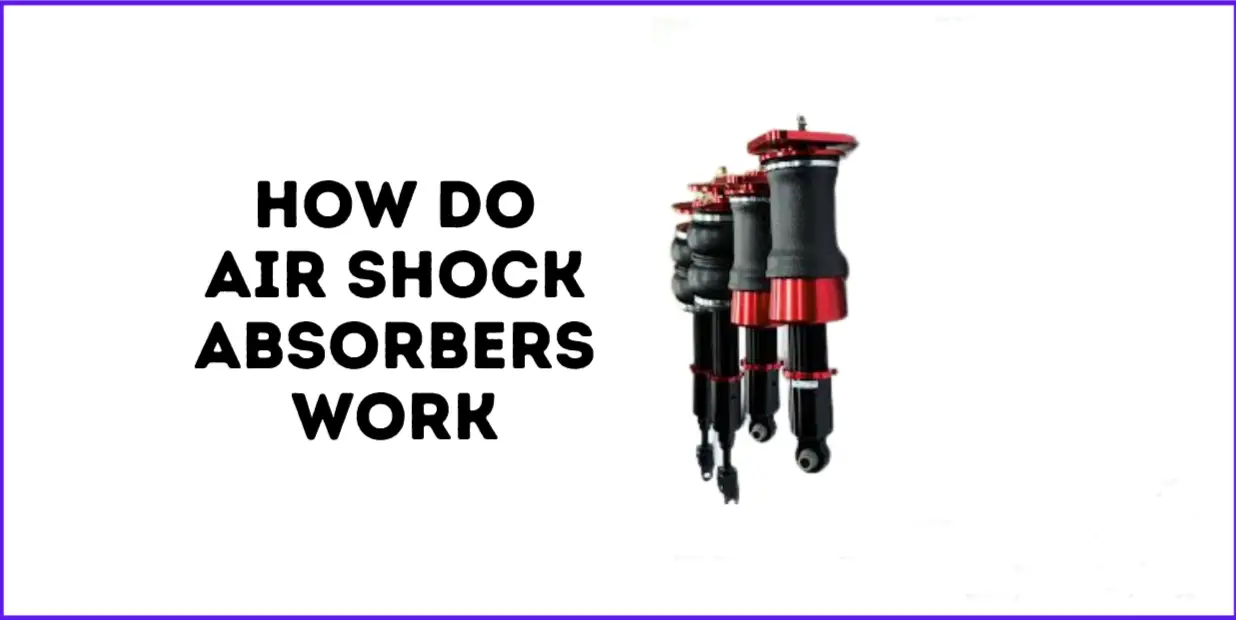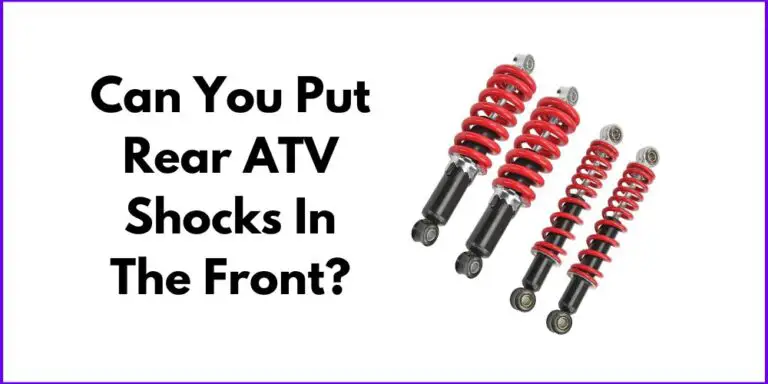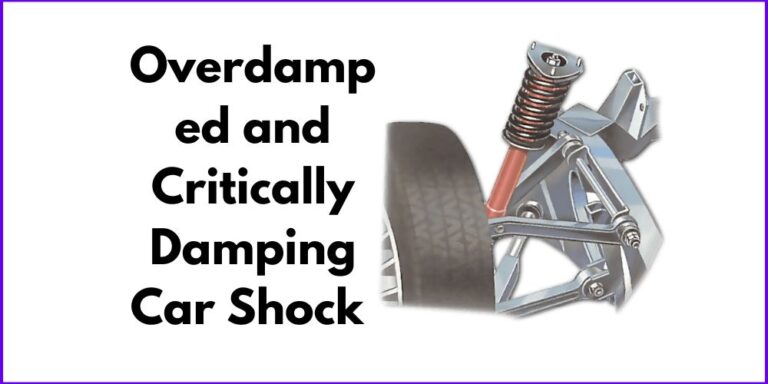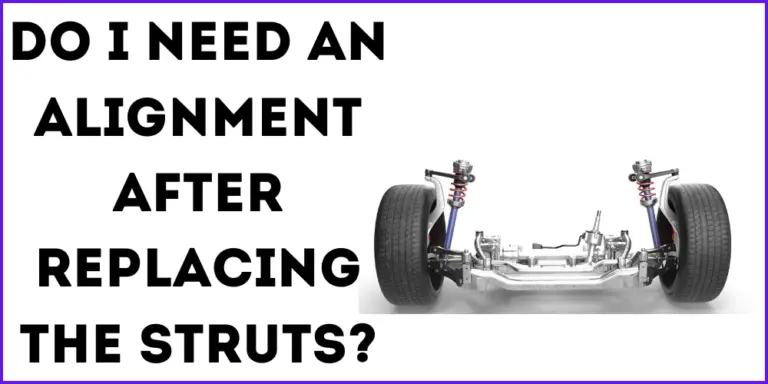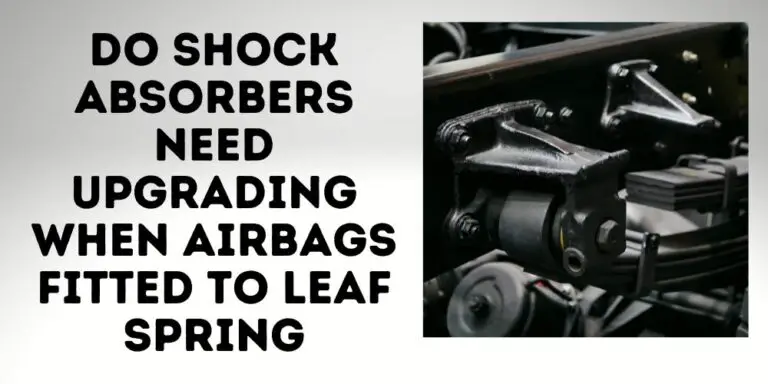Air shock absorbers are an essential component of suspension systems that play a critical role in providing a comfortable and smooth ride in any driving condition. These devices are designed to absorb and dampen the impact of bumps and rough terrain, preventing the vehicle from bouncing and jolting.
Without air shock absorbers, the driving experience would be much more uncomfortable, and the vehicle’s handling and safety would be compromised. In this blog post, we will be discussing the inner workings of air shock absorbers, how they’re able to cushion the ride, and how they can be adjusted to suit different conditions.
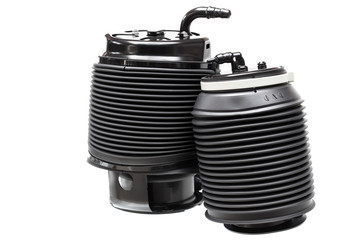
We will also be looking at how air shock absorbers compare to other types of shock absorbers and how to determine when an air shock absorber should be replaced. With this information, you’ll be able to make sure that your vehicle’s suspension is functioning properly and that you’re getting the most comfortable ride possible. So, let’s dive into the details and get a better understanding of how air shock absorbers work.
How do Air Shock Absorbers Work?
Air shock absorbers are a type of gas-charged shock absorber that uses compressed air as a means of dampening the impact of bumps and rough terrain. The basic structure of an air shock absorber consists of a cylinder, a piston, and a valve.
The cylinder is filled with gas, typically nitrogen, and the piston moves up and down inside the cylinder to absorb the shock. The valve controls the flow of gas in and out of the cylinder, which allows for the adjustment of the air pressure to suit different conditions and preferences.
The working principle of air shock absorbers
When a vehicle travels over a bump or rough terrain, the wheels compress the air shock absorbers, which causes the piston to move down inside the cylinder. This movement compresses the gas inside the cylinder, creating resistance to the movement of the piston.
As the vehicle continues to travel over the bump, the compressed gas inside the cylinder expands, and the piston is pushed back up, which helps to dampen the impact of the bump and provide a smoother ride.
how to adjust air pressure to suit different conditions and preferences
One of the benefits of air shock absorbers is that they can be adjusted to suit different driving conditions and personal preferences. The air pressure inside the cylinder can be adjusted by adding or removing air through the valve.
A higher air pressure will provide a firmer ride, while a lower air pressure will provide a softer ride. This adjustability allows drivers to fine-tune the suspension to their liking, whether they prefer a sporty or comfortable ride. It also allows for adjustability for different loads on the vehicle.
It is important to note that not all vehicles come with the option of adjustable air suspension. Many vehicles come with a fixed air suspension, which means the air pressure is set at the factory and cannot be adjusted.
Comparison to Other Types of Shock Absorbers
Air shock absorbers are not the only type of shock absorbers available on the market. There are several other types of shock absorbers that are commonly used in vehicles, including hydraulic and coil-over shock absorbers.
Hydraulic shock absorbers use a piston that moves through a fluid-filled cylinder to absorb impact. These shock absorbers are known for their smooth ride, durability, and resistance to wear. However, they are not as adjustable as air shock absorbers and can be more expensive to repair.
Coilover shock absorbers are a combination of a coil spring and a shock absorber. These shock absorbers are often used in performance and racing applications as they provide a high level of adjustability and can be customized to suit specific driving conditions. However, they can be more expensive than other types of shock absorbers and may require more maintenance.
Air shock absorbers offer a unique combination of adjustability, durability, and cost-effectiveness. The air pressure can be adjusted to suit different conditions and preferences, and they are generally more durable and less expensive to repair than hydraulic shock absorbers. Additionally, they offer a smooth and comfortable ride, making them a popular choice for many drivers.
However, air shock absorbers are a great option for those looking for a balance of adjustability, durability, and cost-effectiveness. However, each type of shock absorber has its own set of advantages and disadvantages, and the best choice will depend on the specific needs and preferences of the driver.
Determining When to Replace Air Shock Absorbers
Air shock absorbers are an essential component of suspension systems that play a critical role in providing a comfortable and smooth ride. However, like all mechanical parts, air shock absorbers can wear out over time and need to be replaced. In this section, we’ll discuss how to determine when it’s time to replace your air shock absorbers and the potential dangers of driving with worn or damaged ones.
Common Signs that Indicate a Need for Air Shock Absorber Replacement
One of the most obvious signs that your air shock absorbers need to be replaced is when you notice a significant increase in bounce and jolting while driving over rough terrain. If your vehicle feels as if it’s bouncing around excessively, it’s likely that your air shock absorbers are worn out. Other signs that your air shock absorbers need to be replaced include a decrease in handling and stability, uneven tire wear, and leakage of fluid or air.
Tips for Maintaining Air Shock Absorbers to Prolong their Lifespan
To prolong the lifespan of your air shock absorbers, it’s important to maintain them regularly. This includes checking the air pressure regularly and adjusting it as needed, as well as having the shocks inspected for wear and tear. Additionally, it’s important to have your vehicle’s alignment checked regularly, as misaligned wheels can cause uneven wear on the shocks.
The Potential Dangers of Driving Worn or Damaged Air Shock Absorbers
Driving with worn or damaged air shock absorbers can be dangerous. Worn shocks can negatively affect the handling and stability of your vehicle, making it more difficult to control in emergency situations.
Additionally, worn air shock absorbers can cause uneven tire wear, which can lead to blowouts and other dangerous tire-related issues. Furthermore, Worn air shock absorbers can increase the risk of accidents by causing the vehicle to bounce and jolt excessively, making it more difficult to control the vehicle and avoid obstacles.
Conclusion
In conclusion, Air shock absorbers play a critical role in providing a comfortable and safe ride, but they wear out over time and need to be replaced. Understanding the signs of worn air shock absorbers and taking steps to maintain them can help prolong their lifespan.
However, if your air shock absorbers are worn or damaged, it’s important to have them replaced as soon as possible to ensure the safety and comfort of your ride. Regularly checking and maintaining your air shock absorbers will ensure that your vehicle’s suspension is functioning properly and that you’re getting the most comfortable ride possible.

